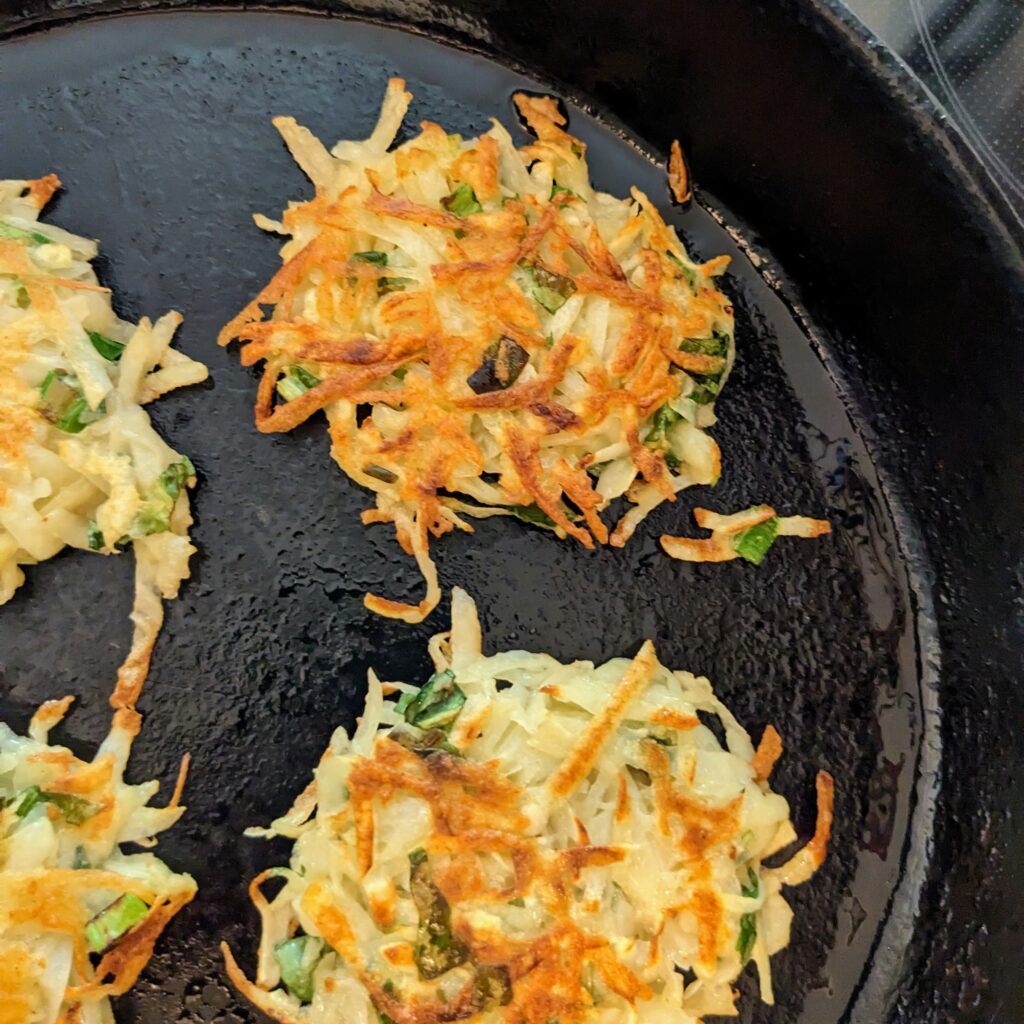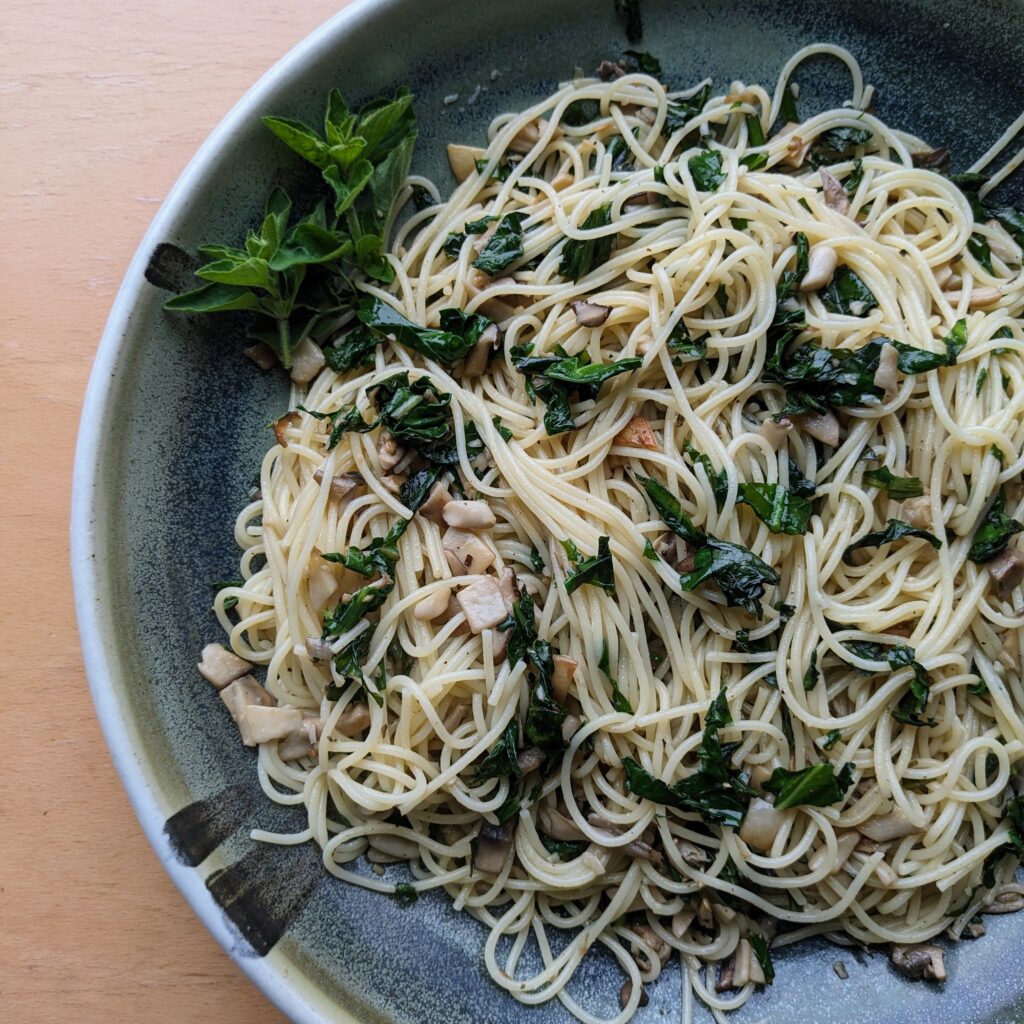Review: The Deerholme Foraging Cookbook by Bill Jones
The Deerholme Foraging Cookbook: Wild Ingredients and Recipes from the Pacific Northwest, revised and updated by Bill Jones
TouchWood Editions (2024)
I was honoured to review the revised and updated edition of Jones' foraging introduction and cookbook for The British Columbia Review. It's full of great information and tasty recipes. It really was a culinary discovery for me.
This article was originally published by The BC Review on October 28, 2024.
***
-Bill Jones, The Deerholme Foraging Cookbook
I love the idea of foraging for food. I conjure an image of myself, driving up a dirt road somewhere in the British Columbia wilderness with a map in hand, baskets secured on my arms, and a good hat to block the sun. My booted feet tread carefully over fallen logs and streams, listening to bird song.
Then I’m drawn rudely back to the reality of the only foraging I actually do regularly: picking the Himalayan Blackberry. It’s unpleasant work. On a hot day in Vancouver, I find a patch and wade into the thorny thicket, trying to avoid the ubiquitous spiders that spin their webs in the brambles. Either I’m overdressed in long pants and sleeves to avoid the thorns, or, when I give in to the need for a cool breeze on my skin, I emerge covered in bleeding scrapes.
But oh my, when I look at my containers full of juicy blackberries, I know it was all worth it, and I will never stop.
Lucky me, then, to spend time with Michelin-trained chef Bill Jones’s The Deerholme Foraging Cookbook. Jones hails from Deerholme Farm in Vancouver Island’s Cowichan Valley and has been a strong presence in the British Columbia foraging scene. This is his revised and updated version of the Deerholme Foraging Book, originally published in 2014.
 |
| Bill Jones is a Michelin-rated, French-trained chef based on Vancouver Island. His Deerholme Farm is in the Cowichan Valley. He is the author of twelve cookbooks. |
Exploring Jones’s foraging volume was an eye-opening experience. On one hand, it affirmed my natural inclination to forage and cook with wild ingredients. On the other, it was a humbling showcase of the skill needed to be a safe and respectful forager, teaching me that I have a long way to go if I want to increase my found food repertoire.
This is no dry and boring instructional book. Jones reminds the reader, “Just to make things clear, this book is not designed to be a field guide to foraging. It is a handbook on the use of wild foods for harvesting, tips for developing a pantry, and recipes for creating wonderful meals. It is not meant to be a definitive guidebook on the subject.” This allows Jones to pen a delightfully chatty first few sections, even before he gets into the recipes.
“We have obviously evolved from the need for daily foraging for our sustenance. In the modern world, we can easily buy food from a store or order it over the Internet. The ability to forage is not usually needed for day-to-day survival (at least not yet: cue the zombie apocalypse footage.)”
I know that zombies aren’t real, but even so, sometimes I find myself thinking that a zombie horde is unavoidable at some point. At least I’ll have the Deerholme Foraging Cookbook to help me through.
Jones shouts his love for foraging and the land loudly in this book, and his sentiments about eating wild appealed on many levels. “Foraging teaches us to be resourceful, cautious, frugal and happy–even just a little bit. In many ways, it is not even the food that is the reward. It is the sense of accomplishment that comes from locating, identifying, and consuming wild food.”
With those words, he proceeds to an overview of the basics in “The Pathway to Foraging,” a section that emphasises the basics of planning and safety. While much of the advice may be very suited to a more rural forager than me, I appreciated his take on poisonous plants: “…every aspect of gathering wild plants has some risk.” Take water hemlock, Jones says. It has cicutoxin that can damage the nervous system and can be mistaken for more common safe edible plants like wild celery. Relevant to the urban setting, I paid full attention to his discussion of how wild plants readily suck up pollutants. I’ll have to be cautious as I forage in my urban neighbourhood.
His section on “A Wild Foods Primer” had me ticking off things that I’d like to forage for. Though I only pick blackberries regularly, it was gratifying to realise that over the years I have indeed foraged more than I thought. I’ve picked the occasional wild blueberry on a North Shore mountain trail, plucked red huckleberry from shaded bushes near my provincial campsite to toss on my morning cereal, and always munch on a few spring salmonberries when walking in the woods. I’ve even eaten my weeds! I’ve occasionally included chickweed from my veggie garden in my salads.
When I looked over the recipes I wanted to try, I was drawn to those including nettles and burdock root. Here, I ran into stumbling blocks. In my urban environment, without a car, I felt at a loss to find them. Nettles and burdock root were in season but without a mentor to help me find a Vancouver location and, more importantly, to identify these two species the first time I foraged, it felt overwhelming. I couldn’t find a foraging course locally. Jones does include a list of books more specific to plant identification for further reading if desired.
I chose four recipes to test from the book. Even without nettles and burdock root there was plenty for me to forage. Sort of. While I did gather some ingredients myself, I “foraged” at the supermarket for others. Regardless, this was a found-food adventure that led to some interesting cooking.
*
 |
| Reviewer Trish Bowering’s “go” at the latkes. Photo Trish Bowering |
Potato and Wild Onion Latkes
I love a good latke and I don’t make them often enough. Jones’s latke is supposed to contain wild onions, but he notes that green onions are a valid substitution. I have an unruly patch of chives growing in my backyard, so I gathered some of those and threw them in. Jones says, “I also like to add wild greens like miner’s lettuce, purslane, and young dandelion leaves to the batter for a nice herbal quality.” Guess what I have so many of in my yard? That’s right, dandelions. Venturing into my backyard, basket in hand like a real forager, I picked all the dandelion greens I could. I chopped up my backyard chives and dandelions, added some supermarket green onions and mixed them into the potato latke batter. These were heavenly, crispy and wonderful!
 |
| Trish tries spaghettini. Photo Trish Bowering |
Spaghettini with Wild Greens and Mushrooms
I still had some dandelion greens left and decided on a pasta dish to use them up. To be clear, Jones didn’t call for dandelions in this recipe, rather lamb’s quarters, sheep sorrel or oxeye daisy greens, but I was confident. I substituted my front-yard oregano for the sage, and tossed it with cooked pasta, sauteed supermarket mushrooms and the wilted dandelion greens. You can’t go wrong with a glug of good olive oil and a toss of parmesan cheese. What a spectacular looking dish and it tasted…pretty good. Alas, two cups of dandelion greens rendered the dish a tad bitter. I’d suggest using more tender dandelion greens, or using the wild greens that Jones actually suggested.
 |
| Spot prawns of the B.C. coast made a great local addition to this crispy dish. Photo Trish Bowering |
Wok-Fried Crispy Spot Prawns with Garlic and Chilies
Part of exploring a cookbook that brings me joy is discovering an ingredient I’ve never used. I’ve never cooked with spot prawns, but this year, my timing was perfect to buy them locally and try my hand. The spot prawn is found off the BC coast. “All cold-water shrimp are fast growing, short-lived, and have a high reproductive capacity, making these species less vulnerable to fishing pressure,” Jones writes. This is “foraging” that I was happy to leave to professional fishers. The recipe is as simple as you can get: shallow frying the prawns in hot oil and combining with sauteed garlic, onion and jalapeno. Toss with cilantro and you’ve got a simple, delicious seafood plate. We had fun with these, picking them out of their shells and enjoying the flavourful meat. Messy but good!
 |
| Gathering the local ingredients for the cake. Photo Trish Bowering |
Blackberry, Mint, and Chocolate Cake
Finally, back to my blackberry roots. I still had a couple of freezer bags full from last summer’s foraging efforts and was drawn to this cake. It’s another simple recipe, and so very decadent, combining copious amounts of butter, chocolate and sugar into a basic brownie batter, with the addition of mint extract. I added a cup of my frozen blackberries and baked it all in a tart pan. I served it at my book club and we agreed it was decadent and chocolatey but could use more blackberries. Next time, I’ll double the berry quantity.
*
The Deerholme Foraging Cookbook proved to be truly inspiring. This book will appeal to well-established foragers, but also to those, like me, who want to think outside the supermarket norm. The recipes that I tested used simple ingredients, lent themselves to versatile substitutions, and were generally delicious, even if I sometimes had to “forage” from the local grocer.
 |
| Dandelion greens picked from reviewer Trish Bowering’s own backyard. Photo Tris |
The book’s enduring value is enhanced because of the instructional sections and catalogue of basic foods to forage. Even though I couldn’t find a way to forage nettles and burdock root this spring in urban Vancouver, I feel determined to keep trying. Now I’m looking at my backyard dandelions and seeing them as food! And you bet I’ll continue to be out there every sweaty and spidery August in my blackberry foraging spot filling my containers and feeling accomplished to have fed myself for free.



Comments
Post a Comment